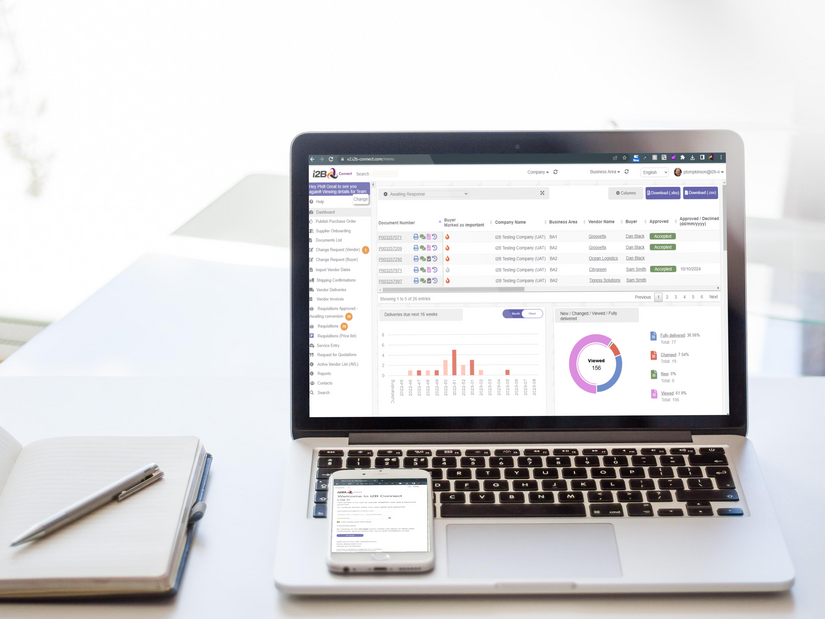The importance of accurate, real time procurement analytics
Procurement of goods and supplies whether handled directly or indirectly all follow specific steps to evaluate demand, purchase necessary items or services, and manage orders from start to finish. For businesses who operate with a limited supply or manage inventories with replenishment processes that happen ‘just in time’, finding gaps and inefficiencies in the procurement process can translate to shorter receipt times, reduce network risks, and lead to a myriad of cost saving opportunities. Taking a proactive stance and examining KPIs and metrics allows supply chain leaders to break apart each segment of the procurement process to monitor effectiveness and reveal weaknesses in the chain. This includes areas such as:
- Suppliers
- Order management
- Sourcing
- Supply
- Risk
- Performance
How procurement analysis works
Performing in-depth procurement analysis relies heavily on the data available and predictive analytical tools. i2B DataKITE collects information from multiple sources and extracts historic transactions to provides a whole of cycle overview. Data is verified and validated for accuracy, and mined data is stored in a database which is organised and categorised to convert structured and unstructured data into useable insights. As data is enriched and filtered it provides the basis for company-wide analysis and is extracted to supply key performance indicators, trends, and metrics. Using analytical tools, the data is formatted and converted into a series of easy to interpret dashboards providing business owners and key stakeholders with clear visibility into procurement functions. Leaders and stakeholders can pinpoint cost savings, plan better, and make more intelligent decisions that level out fluctuations across high pressure periods like peak season and sustain operations through unexpected events.Benefits of procurement analysis
Having the ability to gain deep insights into business spending with procurement analytics, helps organisations by providing a complete 360 degree view of their supplier and purchasing activity. The information extracted can be used to give companies a leading edge in inventory management and diversify their supplier or vendor options to support procurement efforts. Software tools allow the fast manipulation of data with a predictive view into impacts and outcomes, giving a clear vision of the best course of action to take in any given scenario. With the capability to run multiple possibilities and forecast the outcome of decisions right through to the conclusion, costs and supplies may be easily tracked and bottlenecks avoided. Strengthening and maintaining procurement practices supports internal and external stakeholders like purchasing managers, category managers and CPOs. Automations and optimizations may be implemented to remove repetitive tasks and improve data accuracy. Resources can be freed up as analysts shift focus from data extraction and management to reviewing dashboards and using insights to drive positive changes in organisational expenditure. In real terms, this can support more effective contract management, reduces risks, and improves compliance across the network. Problematic occurrences can be quickly addressed and issues with specific vendors may be highlighted and dealt with. Improved resource management and purchase order value and volumes can be easily compared across vendors, and better supplier relationships can be maintained using information from procurement analytics. Streamlining business services, driving greater accountability, and improving efficiency all translates to cost saving opportunities and better service provision for supply chain companies. To find out how i2B DataKITE can help you get more out of your procurement data complete the form below and a member of the team will get in touch.The importance of accurate, real time procurement analytics

